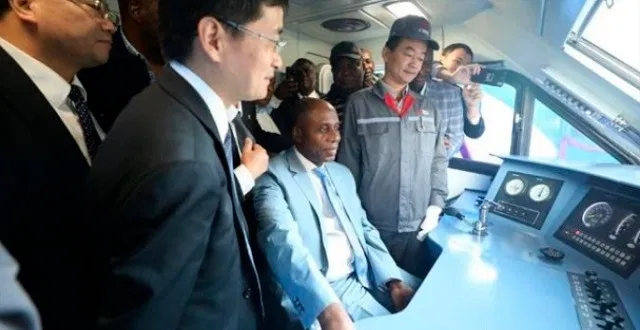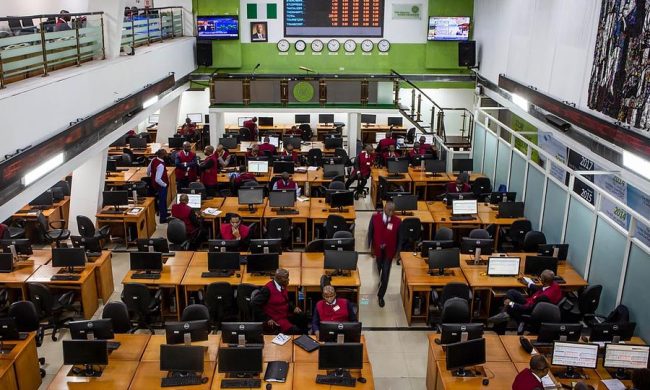Since the President Muhammadu Buhari administration came into power in 2015, quite a number of Nigerians expected some radical changes in some critical sectors of the economy and one such sector that seems to have so much to show for is the transportation sector.
While the Abuja-Kaduna rail, Lagos-Ibadan and other rail projects will go down in history as some of the biggest achievements of the All Progressives Congress (APC)-led government, the milestone recorded in maritime transport, most importantly, the repositioning of the Maritime Academy of Nigeria (MAN) Oron in Akwa Ibom, has received accolades across the sector.
At every opportunity, when the Minister of Transportation, Hon. Rotimi Amaechi, gets the opportunity to expatiate on what his leadership was able to do differently at the ministry, apart from the aforementioned, he always enlists the fact that in the aspect of the inland waterways, the ports have been re-organized for efficiency.
In the aviation sector, which was directly under him in the first term of Buhari, two of the four international terminal buildings in Port Harcourt and Abuja airports have been completed. Presently, the Kano and Lagos airports are at various stages of completion.
Though Amaechi has said the Buhari administration was divided on whether the government should invest in national carrier and then sell the equity later or to simply get investors and give them the franchise of Nigeria Airways or Air Nigeria, whichever way the pendulum eventually swings, it is a matter still on the government’s table.
But Amaechi has continued to boast that the current administration had achieved a lot in ensuring the safety of the nation’s airspace.
Apparently armed with the records of his achievements and what needed to be done to further accentuate the progresses recorded in the transport ministry under him, Amaechi implored the Joint Committee of the Senate on Maritime Transport and House of Representatives on Ports and Harbour, Inland Waterways and Maritime Safety, Education and Administration, to make substantial amount of money available to his capital intensive ministry so as to be able to make progress.
Though out of the President Buhari N10.33trn 2019 budget, N123 billion was set aside for the Ministry of Transportation, when he addressed the federal lawmakers during the 2020 budget presentation on Monday, October 21, 2019, the minister explained why more money was required in his ministry to accomplish some major projects, which according to him, have the capability to positively impact the economy.
According to Amaechi, Nigeria requires billions of dollars to address the rail infrastructure, particularly those ones like the Lagos to Kano, Lagos to Calabar and Port Harcourt to Maiduguri that are expected to be completed before the end of April 2020.
Talking about the Lagos to Kano line, which is presently ongoing with the Lagos-Abeokuta-Ibadan phase, he said: “We are actually close to the end, it is just the challenges we are having around Lagos and its cosmopolitan nature. We have finished from Iju to Ibadan. All we are doing now is to complete the stations. We hope that before April, we would have finished everything about Iju to the Seaport in Lagos. Now, Lagos to Kano is between 8.3 to 8.7 billion dollars. For that, we are getting a loan from the China Exim Bank.”
While he did not shy away from underscoring his preference for either Port Harcourt to Maiduguri or Lagos to Calabar rail routes, being that both are located in his South-south region, the transport minister said the Lagos-Kano route was the most viable, because it has the capacity to generate 30 million tons of cargo, that would help pay back the loan.
While he said study on the Lagos to Calabar railroad was not available yet, Amaechi stated that the available study shows that the Port Harcourt-Maiduguri route would only attract 11 million tons of cargo.
“Lagos to Kano; that we already have funds because it was the first project by Obasanjo. It is about 8.7 billion dollars. Lagos to Calabar is 11.1 billion dollars. Port Harcourt to Maiduguri is 14.2 billion dollars. Put them all together.
“So, if you ask me, as the Minister of Transport, I want this thing to pass through my village, but the money is just not there. However, one of the reasons why we are going to Sochi, Russia is to negotiate for a loan for either Port Harcourt to Maiduguri or Lagos to Calabar,” Amaechi told the lawmakers.
He said since the Chinese government was saying they didn’t have enough money for other projects, because they wanted to finish the ones they started, the government was already looking for money to fund the other projects because President Buhari was of the opinion that completing infrastructure projects was the first step to economic growth.
For clarity, the Lagos to Kano is Lagos-Abeokuta-Ibadan-Ogbomosho-Ilorin-Minna-Abuja-Kaduna-Kano. At Osogbo, it links up to a stop in Ekiti. Lagos to Calabar is Lagos through Ore, Akure, Agbor, Asaba and Onitsha; and it continues from Benin to Ughelli, Warri, Yenagoa, Port Harcourt, instead of going straight to Uyo, you tee back to Aba, Aba to Uyo, Uyo to Calabar. That is Lagos to Calabar.
For Port Harcourt to Maiduguri, there are two alignments there, Port Harcourt-Owerri-Nnewi-Awka-Enugu-Abakaliki. The second alignment is Port Harcourt-Aba-Umuahia-Enugu-Makurdi-Lafia-Jos-Akwanga. There will a tee off to connect to Abuja so that there could be a connection between West and East. It continues to Jos-Bauchi-Gombe-Yola-Damaturu-Maiduguri.
He hinted that since the difference between standard gauge (120km/hr) and narrow gauge (100km/hr) is speed if the needed $14bn was not available to build the Port Harcourt to Maiduguri, the old one could be rehabilitated. The rehabilitation, according to him, would entail removing the tracks and replacing them with new ones.
For Warri-Itakpe, the minister assured that it would be completed early next year, saying, “That one is nearing completion. It should be completed by January or February; March latest. But that is not the problem. The problem is Abuja to Itakpe with the Seaport in Warri. We have signed all the documents; we are waiting for the Chinese.”
On concerns for speedy completion of projects, he said if money was available, the projects were done in what they called ‘gangs’. While a gang takes Ibadan to Osogbo, another gang will take Osogbo to Ilorin, another gang will take Ilorin to Minna, another gang will take from Minna to Abuja, another gang will take from Abuja to Kaduna, another one from Kaduna to Kano.
“We are yet to get the money, we just went to China, allow them, when they sign the agreement we will come to the National Assembly to give you what they call borrowing plan, when they approve the borrowing plan, they will give the money to us,” Amaechi said.
As regards maintenance and sustainability when the rails are completed, he told the legislators that over 150 Nigerians had been sent to two universities in China, in a programme funded by the Chinese government, to go and study railway engineering.
He said: “They have gone. We hope that in four years they will graduate. Those who will do masters and Ph.D. will do that and come back and teach in the university we are establishing here. We are establishing a Transportation University in Daura. The project is also not funded by us and will be managed by the company building it for years before we have lecturers to take over. We are making sure that we have the manpower to take over from the Chinese.”
When he arrived from China on October 20, a day before he met the federal lawmakers, Amaechi, who said his sojourn to the country was to get more locomotives and coaches, revealed that 20 new coaches for the Abuja-Kaduna and the Lagos-Ibadan rail lines would arrive Nigeria in about six weeks.
Having had a test run of the newly built trains and motored cars in China, Amaechi confirmed that the trains were better improved and of higher technology than what obtained previously. He added that more trains were still being built for Nigeria and the next batch would be delivered as soon as they are ready.
In the overall, Amaechi is optimistic that what is critical to the sustenance of the Nigerian railway system was what is being done in China.
“We are training our people. The Chinese won’t live here forever. They have to go. So, our own engineers will take over; and I met with some of those Nigerian engineers during my China trip.
“We hope that in the coming years, they will come back and then we can stop the Chinese maintenance contract in both Kaduna-Abuja and Lagos-Ibadan,” Amaechi said.
Where all these monies go into the transportation sector, the tendency that the economy would be reinvigorated and by extension, the political economy, in general, owing to its spiraling effect is not negotiable.
Source: THISDAY














